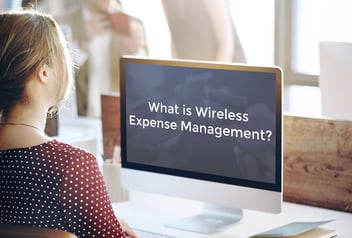Many companies have one toll free carrier and that carrier maintains Resp Org (responsible organization) for the companies toll free numbers. However you don't need to be a carrier to become a Resp Org, in fact with the many benefits of disaster recovery, enhanced routing and lowering your costs we would suggest any company with a call center or significant toll free traffic to become their own resp org.
One of the best ways to become you own Resp Org is by using a company called ATL. Here's how it might work. Let's say your company becomes a Resp Org via ATL. They provide you a Resp Org ID, lets say AUA68. You're now able to take control over your toll free's by sending a request to the current Resp Org that you want your numbers released to AUA68. The current Resp Org will release the numbers or they will reject the request. If they release the numbers then congrats you now have control. If not they will provide a reject code and you will need to find out what it is and make the changes.
This could be a company name mismatch, signature mismatch or you may have all of the information correct and the carrier just rejected the request to stall the transfer. If that's the case since you're now a resp org you can NASC a number. This means you show the SMS800 folks the correct information and they force the number to your Resp Org. Typically within a couple of hours. Don't worry about the logistics as ATL provides all the communication to the SMS. You only need talk to the folks at ATL and they take care of walking you through everything. I've worked with them for 7 years and they're outstanding. Realize they are not a carrier they just allow you to become a Resp Org.
So you now have your Resp Org and the toll free's are assigned to your Resp Org ID. Now you have lots of options. The other part of toll free service is the SMS. It's the database that contains the routing information for toll free's. Let say you call 800-555-1212. In order to know where to send that call it does a look up in the SMS database and looks for the CIC (carrier identification code). Lets say it's 10288. It then routes that call to AT&T. Once on the AT&T network it will be translated to a circuit if dedicated or a line if switched.
Being able to change your CIC code has a lot of advantages. First it allows you to maintain Resp Org and hence control of your numbers. Let's say the toll free's are currently terminating to a ring to or dedicated circuit at your company and you use Qwest. Now you want to move that toll free to an outsourced call center and they use AT&T. You would tell the call center to contact their AT&T rep and turn up the toll free on their AT&T account along with how to terminate it, a ring to DID or a T-1. Once AT&T says they've completed the turn up you can then change the CIC code. You contact ATL and ask them to change the CIC code to AT&T and whamo the SMS is updated and all calls are routed to the call center. As long as you don't tell Qwest to disconnect the number you can always change the CIC code back to Qwest at anytime and the call will route back to Qwest. This gives you control to switch the numbers back should the call center not work out or your business needs change.
Within the SMS there are a lot of built in routing options that may be of interest now that you're a Resp Org. For instance you can route calls to different carriers at different times of the day, allocate calls based on a percentage or provide disaster recovery.
Why would you want to do that? Well let's say you had to evacuate your office like we did during the San Diego fire. You have another office in Dallas that could take the calls. You have Qwest in San Diego and AT&T in Dallas. You have the toll free turned up on both carriers but the CIC is 100% Qwest sending all calls to San Diego. One call to ATL and within minutes you change the CIC to AT&T and then all calls go to Dallas
Another situation might be carrier diversification. Let's say you install AT&T, Qwest and Wiltel circuits at a location for carrier redundancy. All carriers want 100% of your business and if they have Resp Org for a given toll free they'll make it very difficult or expensive to send a percentage of calls to another carrier. If you have Resp Org you have all the control. You can turn up a given toll free on all three carriers and then do percentage allocation to suit your needs from a cost perspective or redundancy perspective. Maybe 10% to high cost AT&T, 30% to Qwest and 60% to Wiltel. If Wiltel goes down you can within minutes route the traffic to 50% Qwest/50% AT&T eliminating down time.
So maybe this seems like a lot of work and it would cost a lot of money. Here's the great news. The SMS/800 charges all carriers 15.12 cents per toll free. So those $5, $10 and $20 MRC's you see for a toll free number have pretty good margins and that's why you can sometimes negotiate with the carrier to waive the fee. They only eat 15 cents per toll free. ATL charges you a small monthly fee and charges you when you make CIC changes. So let's say you have 100 toll free's. ATL would charge you $350 and if you were paying $5 per toll free number from your carrier you're now becoming a Resp Org and saving $150 per month!! ATL does have plans down to $75 per month for ten toll free's but anything over 30 is a flat $350.
Once again this may seem a little complex but significantly reducing costs while getting the benefit of least cost routing, disaster recovery and enhanced routing capabilities make becoming a Resp Org a sound decision for call centers and companies with significant toll free traffic.


